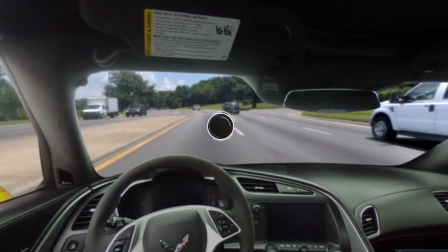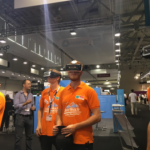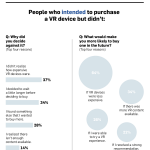Forrester report: VR is not yet ready for marketers
The research firm says it’s at least five years from being a mass consumer medium, although augmented reality, 360-degree video and mixed reality are acting as stepping stones.
If you’re a marketer rubbing your hands together in anticipation of the virtual campaigns you’ll run in virtual reality, you may want to take a breath.
The title of a recent Forrester Research report will likely slow you down: “Virtual Reality Isn’t Ready for Marketing Yet.” (Fee required for non-clients.)
The study finds that “critical-mass consumer adoption of high-end VR headsets is five years away,” although 360-degree video “will flourish on low-to-mid-end VR devices in the meantime.”
Generally, VR is defined as immersive and generated environments that change as you move through them. Although 360-degree video can be seen on a headset as an immersive environment, it is a kind of “light VR” because it is a recorded spherical video that is always the same space and events.
The report does acknowledge augmented reality and mixed reality, but it makes no predictions about when they will reach critical mass. It also makes clear that augmented and mixed reality are not immersive, and so are not really VR.
Augmented reality, where generated objects are laid on top of real scenes inside a smartphone’s viewer, has already had a breakout mass hit, Pokémon Go last July.
Mixed reality is a kind of augmented reality, where the objects superimposed on real scenes are in 3-D.
As the report notes, mixed reality can sometimes interact with the world because the platform might recognize edges, actions and objects in the scene, such as a person’s actual hand moving a generated 3-D ball.
But the report describes these generated 3-D images as “holograms,” a term that is often used incorrectly to describe generated 3-D objects in a smartphone viewer. A hologram is actually created as the interference pattern from at least two lasers, and the viewed hologram is a projection of that interference.
Eventually, the report acknowledges, immersive VR will create new kinds of storytelling that offer a whole new dimension for marketing. But it has a ways to go. According to Forrester, 42 percent of US online adults last year said they had never heard of VR headsets and 46 percent didn’t see a use for it in their lives.
The challenges to growing a mass audience, co-author and Forrester VP Thomas Husson told me, include not only the cost and use of the VR headset, but also the “chicken-and-egg dilemma.”
The headsets need to reach a lot more consumers before they establish a large enough installed base, especially if marketers want to reach beyond VR’s core market of gamers. And the kinds of content and the ways they are distributed need to increase dramatically to support all those headset-wearing consumers — who are waiting for enough good content before they buy the headsets.
But Husson also pointed out two other factors affecting marketers. First, the production cost of immersive VR is still very high, and the process is complicated. And VR is not yet fully connected with marketers’ tools. From the report:
“‘There is no single partner able to produce, program, and tag your VR content, and no clear process to integrate it in your tracking, reporting, and marketing cloud systems,’” explains Boris Petrovitch Njegosh, founder at Rocket Labs Unlimited and former head of digital content innovation at Renault. ‘Every step of the way is a silo, in which you have to work with different partners and systems.’”
For instance, suppose a marketer wanted to provide more information about a product related to a given immersive experience. There are virtually no tools that make that as easy, as automated or as trackable as, say, providing that kind of “more info” on a web site, in an app or via email.
In the current environment, the report recommends, brands can benefit from investing in VR only if they want to be known as a pioneering brand, if they want to extend certain kinds of experiences (like roller coasters if the brand is Six Flags) or if they want to use VR to help navigate a complex path to purchase, like a new car or a new home.
Eventually, VR can transform the nature of advertising, social networks, the way intelligent agents work, travel and many other arenas. But that marketing future is not here yet.
Marketing Land – Internet Marketing News, Strategies & Tips
(32)















